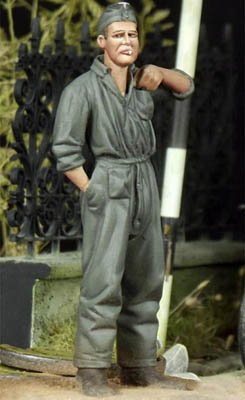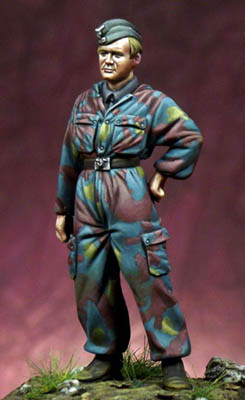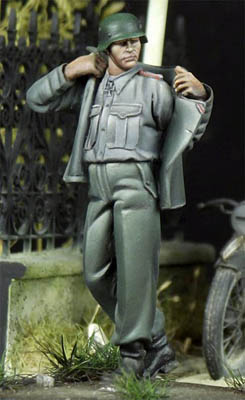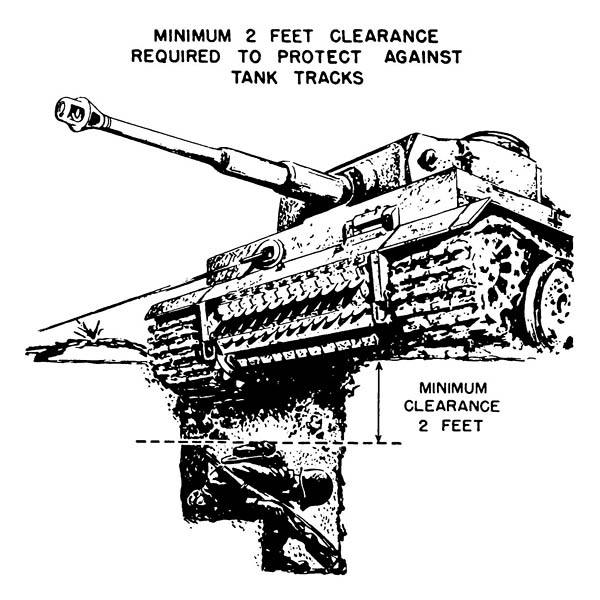
Combat Crew Manual, XX Bomber Command, December 1944

Combat Crew Manual, XX Bomber Command, December 1944
Japanese Plane Names Are Given
Navy, Army Adopt Title ListingThe Navy and Army have adopted an official list of designations for Japanese military planes. Fighters carry men’s names, bombers are named after women, as are flying boats, while reconnaissance aircraft carry both men’s and women’s names. The list follows
FIGHTER PLANES
Nickname — Type
CLAUDE — Single engine fighter
NATE — Single engine fighter
HAMP — Single engine fighter
OSCAR — Single engine fighter
RUFE — Single engine floatplane fighter
NICK — Twin engine fighter
TOJO — Single engine fighter
TONY — Single engine fighterBOMBERS
NELL — Twin engine bomber-reconnaissance
SALLY — Twin engine medium bomber
HELEN — Twin engine bomber
KATE — Single engine medium bomber
VAL — Single engine dive bomber
LILY — Twin engine light bomber
JILL — Single engine torpedo bomber
IDA — Single engine bomber-reconnaissance
BABS — Single engine bomber-reconnaissance
SONIA — Single engine bomber-reconnaissance
MARY — Single engine light bomber
LIZ — Heavy bomberRECONNAISSANCE PLANES
DINAH — Twin engine reconnaissance
JUDY — Single engine reconnaissance
ALF — Single engine floatplane reconnaissance
DAVE — Single engine floatplane reconnaissance
SLIM — Single engine floatplane reconnaissance
PETE — Single engine floatplane reconnaissance
GLEN — Single engine floatplane reconnaissance
JAKE — Single engine floatplane reconnaissanceFLYING BOATS
MAVIS — Four engine flying boat
CHERRY — Twin engine flying boat
EMILY — Four engine flying boatTRANSPORT PLANES
TESS — Single engine transport
TOPSY — Twin engine transport
THELMA — Single engine transport
Source: Naval Aviation News, June 1944.
The RB-1 Conestoga stainless steel cargo aircraft developed for the U.S. Navy during WWII by the Budd Company of Philadelphia, Pennsylvania. Only twenty aircraft were built, and the innovative Conestoga never entered active service. The following article on the Conestoga appeared in Naval Aviation News, June 1944.
Navy Gets Steel Aircraft
Conestoga Can Carry 2 Jeeps
The Navy has accepted the Budd Conestoga, first large-size airplane of stainless steel construction, and turned the aircraft over to Naval Air Transport Service for cargo transportation. Designated the RB1 flight ship, the Conestoga is the first plane obtained by the Navy which was designed especially for cargo carrying, other Navy cargo planes being adaptations of combat aircraft or passenger transports.
The Conestoga is a high-wing monoplane, 68 ft. long, with 100-ft. wingspread. It is powered by two Pratt & Whitney engines of 1,200 hp. Except for plywood doors and floor, the plane is constructed entirely of stainless steel varying from .008 of an inch upward and is spot welded. Cargo capacity is 10,400 lbs.
The plane can carry one ambulance or two jeeps. It may be fitted with 24 seats or adapted to carry 24 stretchers. Paratroops can be launched simultaneously from doors on both sides of the fuselage while the troops’ supplies are being dropped through the rear.
New WWII German 1/35th scale resin figures from The Bodi:
• C-35009: German Mechanic
1/35th Scale, Resin, 7 Pieces, Price 11.80€
Sculpted by Krisztian Bodi Boxart painted by Laszlo Gyorgy
• C-35020: SS Panzer Crewman
1/35th Scale, Resin, 2 Pieces, Price 11.80€
Sculpted by Krisztian Bodi Boxart painted by Oliver Kovacs
• C-35021: SS SPG Officer
1/35th Scale, Resin, 3 Pieces, Price 11.80€
Sculpted by Krisztian Bodi Boxart painted by Bela Illes



Training and Teamwork Brought Us Back
by Capt. Charles S. GrantAs Navigator of the B-26 bomber, So Sorry, Capt. Grant flew 37 combat-missions in the Southwest Pacific theater. Here is the Captain’s story of his most unforgettable flight.
The So Sorry was dishing it out that morning over the New Guinea coast. Six or eight Zeros had jumped the formation, and our gunners–Sgts. Lawrence Steslow, Melvin McCaskey and Andrew Johnson–were strictly “on the ball.”
Johnson in the top-turret, Steslow firing from the tail, and McCaskey manning both guns in the waist had cleared the air of enemy fighters as our pilot, Maj. Gerald Crosson (then a Capt.) swung in over our objective at 8,000 for a long, steady bombing run. A few flak bursts blossomed around us–but we ignored them. We wanted to be sure that we drew a good bead on our target.
The bombardier’s eve was glued to his sight. He had the Jap air-strip caught square in the crosshairs, and was all set to lay his eggs in there…
And then the whole sky caved in on us! A terrific shock hit the plane–as a 75 mm. ack-ack shell tore through the bomb-bay doors, three feet from my head, and burst backward.
I had a sensation of overpowering heat… and the entire compartment around me was one great swirling ball of angry red and yellow flame.
The blast picked the So Sorry up and stood her on one wing. Her bomb-bays became a shower bath of oil and hydraulic fluid. The bombs jammed in their racks. The elevator controls were severed and the rudder and ailerons partially fouled.
It looked like we’d spin right into that ack-ack battery. But with the stick limp and useless in his hands, Major Crosson managed to pull us out with the trim-tabs! It was the finest piece of flying I have ever seen.
The nearest spot for a landing was back of the Allied line, 200 miles south. But before we had gone a third of the way, we ran into typical New Guinea weather. Every landmark suddenly “socked in.” We limped along on dead reckoning.
Now a navigator has to say to himself: “You’re right!”–and believe it. And when you’re as scared as I was that day, you sweat out even the simplest calculations. I didn’t take any part of the ride “with my feet on the desk.”
When my charts said we should be over our base, we ducked cautiously down through the fog and driving rain. Sure enough, there was a landing strip… and bouncing along beside it, an American Jeep. We knew we were home.
Major Crosson cut the engines, feathered his props and brought us in with our wheels up, our flaps down, our bomb-bay doors wide open and our bombs still hanging crazily in their racks. We hit hard–slid 400 yards–and buried me under an avalanche of dirt scooped up through the open doors.
I dug myself out and looked around–at the men whose courage and skill and training had brought this airplane back when it should have been at the bottom of the Pacific Ocean.
And, looking at them, I knew why nothing will ever stop the AAF. I knew what the General meant when he called it “the greatest team in the world.”
Back in the U.S.A. Left to Right: Major Crosson, Captain Grant, Sgt. McCaskey, Sgt. Johnson. When this picture was made, Sgt. Steslow was an Aviation Cadet, in pilot training.
Army Clarifies “Ship” vs. “Plane” — Naval Aviation News, June 15, 1944.
Army Clarifies Word Usage
“Ship” Must Not Mean “Plane”The Army has issued an official memorandum to halt confusion which arises over use of the word “ship” to refer either to a vessel or an aircraft.
Under the signature of General George C. Marshall, the memorandum directed that all Army personnel “will discontinue use of the word ‘ship’ to designate aircraft.” The memo stated that use of the word to describe a plane has led to serious confusion between personnel of the Army and personnel in various units of the Navy, Marine Corps and Coast Guard.
BuAER COMMENT–Navy and Marine personnel who still persist in calling an airplane a “ship,” should take cognizance.

One-man foxhole protects against tanks. (FM 5-15: Field Fortifications, U.S. War Department, February 1944.)
Intelligence report on a Japanese Zero fighter forced down over the Aleutian Islands and captured by American forces. Source: Bureau of Naval Personnel Information Bulletin, (“All Hands Magazine”), November 1942.
The Japanese “Zero” Fighter
Plane proves maneuverable but protection is poorA Japanese Zero fighter (Mitsubishi ’00), which was salvaged after being only slightly damaged when forced down in the Aleutian Islands, has been brought to the United States and repaired at the Naval Air Station, San Diego, Calif.
The enemy plane will be brought to the Naval Air Station at Anacostia, D.C., where Navy pilots will put it through exhaustive tests in order to obtain data on its performance characteristics. Preliminary tests already have taken place at San Diego.
Present plans call for the Zero to be flown across the United States, in view of the difficulties attached to shipping it. Because the Zero’s airframe is a single unit and the wings are riveted solidly to the fuselage, it is not considered feasible to attempt disassembly of the plane. Details of the proposed cross-country flight have not been worked out.
When salvaged, the Zero was painted a smooth light grey tinted with blue and light green, a coloring selected for operations in the foggy Aleutian area. It has been repainted in Navy colors.
Preliminary flight tests of the Zero developed a top speed of slightly less than 300 m.p.h. Later tests may increase this speed somewhat.
The Zero shows to best advantage in a dogfight where tight turns make high speeds impossible. Then its maneuverability and climbing speed come into play.
Around 200 m.p.h. the Zero is very light on the controls, but at higher speeds the controls become stiff. Above 225 m.p.h. the Zero will not make a fast roll because of this stiffness. At 380 m.p.h., in a dive, the Zero develops marked flutter and vibration, which may be inherent or due to some undetected disalignment caused by its rough landing in the Aleutians.
Otherwise the Zero is a stable, easy-to-fly plane with generally good flying characteristics. Its lightness is not gained by flimsy construction, as it is well designed. The lack of self-sealing tanks and armor protection for the pilot, which mainly accounts for its lightness, have made its over-all combat record against the Navy’s Grumman Wildcat a poor one. The Zero’s empty weight is 3,781 pounds and its combat weight, without belly tank, is approximately 5,200 pounds.
The 900-horsepower radial engine is a 14-cylinder, double-row design using modifications or direct adoption of many features found in our Pratt & Whitney and Wright engines. The propeller is a three-bladed, constant speed, hydraulic type identical with the Hamilton model. Radio equipment is copied after Fairchild units.
The over-all length of the Zero is 30’3″, its wing span 39’5″. The wings are hinged 2 feet from the tips to allow folding for easier carrier handling. The cockpit would be uncomfortably small for most of our pilots.
Armament consists of two 22-mm. low velocity cannon, one mounted in each wing, with 60 rounds of ammunition, and two 7.7 guns, with 500 rounds each, in the nose to fire through the propeller disk.
Introduction to aircraft machine gun turrets from the WWII manual Index of Aeronautical Equipment with Navy and British Equivalents: Volume 5, Armament, March 1944.
MACHINE GUN TURRETS
(LOCAL CONTROL TYPES)The primary function of a machine gun turret is to provide an automatic means for a gunner to track a target and operate the guns. All turrets consist of an enclosure, a turret control system, and means of mounting, sighting, feeding, and firing the guns.
The locally-controlled turret is a rotatable structure in the form of a ball, dome, or rounded cylinder, in which one or more machine guns are mounted. The guns are sighted, controlled, and fired by a gunner within, above, or below the turret, depending upon its type and location in the airplane.
Turrets are designated according to their installation in the airplane, i.e.: upper turrets (on the upper deck), lower or belly turrets (under the fuselage), tail turrets, and nose turrets.
Upper turrets are non-retractable and have dome-like, transparent enclosures of plexiglas and metal under which the gunner sits or stands. The guns may be rotated through 360 degrees horizontally, through 90 degrees in elevation, or any simultaneous combination of the two movements.
Lower, or belly turrets can be either retractable or non-retractable. They may be spherical, with the gunner seated inside; or hemispherical, with the gunner kneeling inside the airplane above the turret. The enclosures are usually of metal and plexiglas. The guns may be rotated through 360 degrees horizontally, through 90 degrees in depression, or any simultaneous combination of the two movements.
Tail turrets are not retractable. The cylindrically-shaped enclosure includes steel armor plate protection, a cover of transparent plexiglas, and, in some installations, flat panes of bullet-proof glass. The gunner is seated completely inside the structure and controls the turret to move the guns through approximately 180 degrees horizontally, 90 degrees upward, and 90 degrees downward.